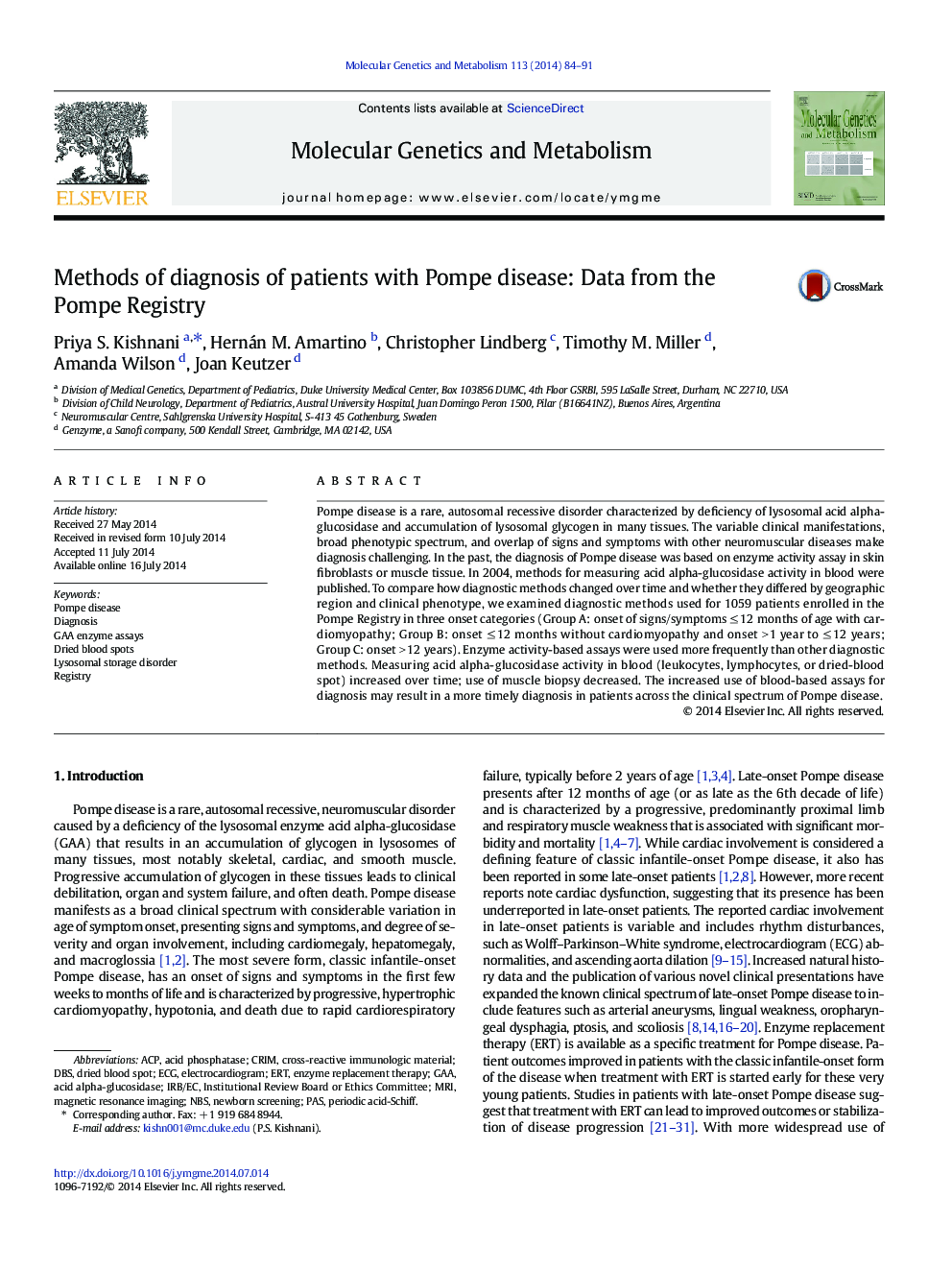| Article ID | Journal | Published Year | Pages | File Type |
|---|---|---|---|---|
| 8343862 | Molecular Genetics and Metabolism | 2014 | 8 Pages |
Abstract
Pompe disease is a rare, autosomal recessive disorder characterized by deficiency of lysosomal acid alpha-glucosidase and accumulation of lysosomal glycogen in many tissues. The variable clinical manifestations, broad phenotypic spectrum, and overlap of signs and symptoms with other neuromuscular diseases make diagnosis challenging. In the past, the diagnosis of Pompe disease was based on enzyme activity assay in skin fibroblasts or muscle tissue. In 2004, methods for measuring acid alpha-glucosidase activity in blood were published. To compare how diagnostic methods changed over time and whether they differed by geographic region and clinical phenotype, we examined diagnostic methods used for 1059 patients enrolled in the Pompe Registry in three onset categories (Group A: onset of signs/symptoms â¤Â 12 months of age with cardiomyopathy; Group B: onset â¤Â 12 months without cardiomyopathy and onset > 1 year to â¤Â 12 years; Group C: onset > 12 years). Enzyme activity-based assays were used more frequently than other diagnostic methods. Measuring acid alpha-glucosidase activity in blood (leukocytes, lymphocytes, or dried-blood spot) increased over time; use of muscle biopsy decreased. The increased use of blood-based assays for diagnosis may result in a more timely diagnosis in patients across the clinical spectrum of Pompe disease.
Keywords
Related Topics
Life Sciences
Biochemistry, Genetics and Molecular Biology
Biochemistry
Authors
Priya S. Kishnani, Hernán M. Amartino, Christopher Lindberg, Timothy M. Miller, Amanda Wilson, Joan Keutzer,
